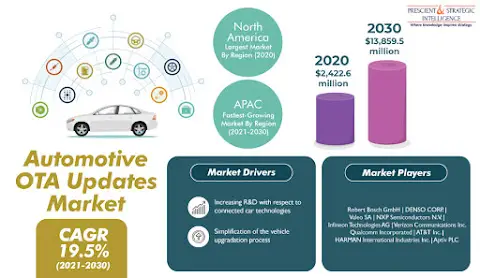The surging rate of automotive digitalization is driving the demand for automotive over-the-air updates, as automobiles require regular software updates, including necessary cybersecurity updates, in order to keep up with the latest innovations and advancements being made in connectivity technologies. Moreover, instead of recalling the sold automobiles to the garage repeatedly, it is economical and much faster to install these updates in vehicles OTA or wirelessly. These updates enhance the functionality of the vehicle, which, in turn, makes it easier to integrate new features and leads to better protection against data breaches and hacking.
Apart from the aforementioned factors, the soaring research and development (R&D) activities being conducted in connected car technologies are also fueling the popularity of the automotive OTA updates. This is, in turn, propelling the growth of the global automotive over-the-air (OTA) updates market. As a result, the market revenue is predicted to surge from $2,422.6 million in 2020 to $13,859.5 million by 2030. Furthermore, as per the forecast of the market research company, P&S Intelligence, the market will advance at a CAGR of 19.5% between 2021 and 2030.
Between commercial and passenger vehicles, the integration of automotive OTA updates in the former is predicted to rise at the faster pace in the coming years. This is ascribed to the fact that these vehicles are extensively used for transporting goods. Furthermore, the enactment of government regulations that mandate the incorporation of vehicle tracking systems in commercial vehicles is also predicted to fuel the adoption of automotive OTA updates in these vehicles.
Across the globe, the demand for automotive OTA updates is predicted to surge sharply in the Asia-Pacific (APAC) region in the coming years. This will be due to the implementation of strict government regulations and policies regarding the adoption of advanced safety features such as emergency stop signals, event data recorders, and intelligent speed assistance, and the burgeoning requirement for autonomous vehicles, shared electric mobility solutions, and connected cars, on account of the soaring disposable income of people, in the region.






